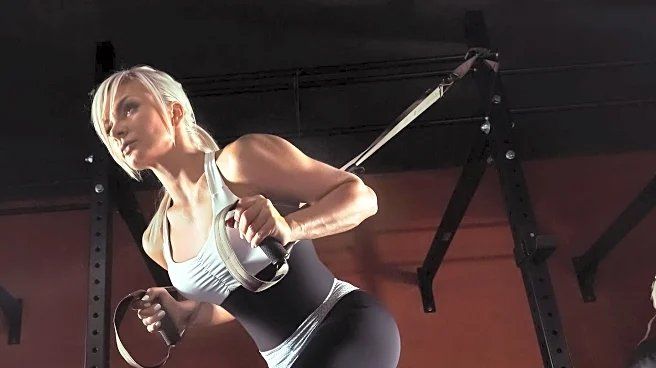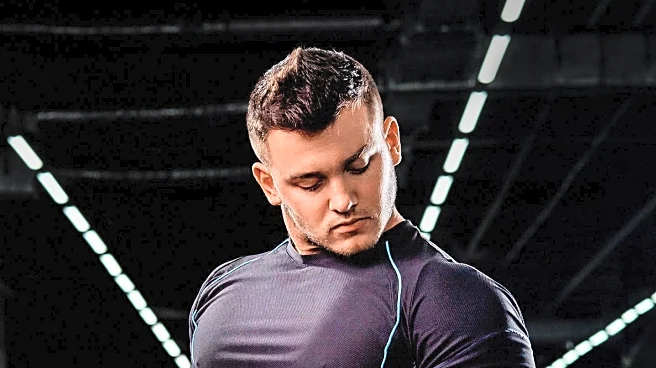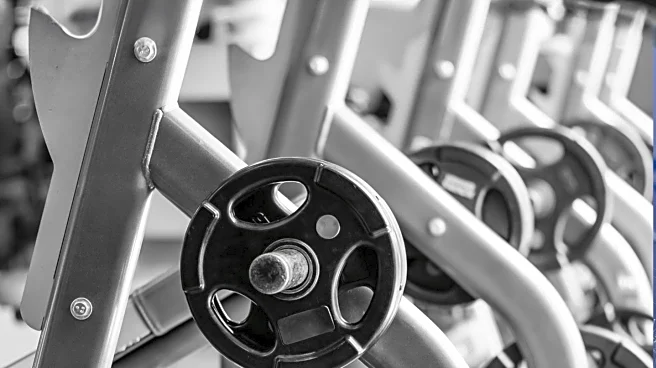What's Happening?
Nikki Ternay, a certified personal trainer and founder of MavenHeart, emphasizes the importance of muscle building for women over 50. As women age, they experience a natural decline in muscle mass, which
can be accelerated by hormonal changes during menopause. Ternay advocates for a structured resistance training routine to counteract this muscle loss, recommending three days of weightlifting per week focusing on major muscle groups such as legs, back, and core. She highlights the health benefits of maintaining muscle mass, including disease prevention and improved mobility, which contribute to a higher quality of life and independence.
Why It's Important?
Building muscle after 50 is crucial for maintaining health and independence. As muscle mass decreases with age, the risk of diseases such as diabetes, osteoporosis, and heart disease increases. Strength training helps mitigate these risks by improving bone density and stabilizing blood sugar levels. For women, particularly those experiencing menopause, muscle building can offset accelerated muscle loss due to hormonal changes. This approach not only enhances physical health but also supports mental well-being by fostering a positive mindset towards aging and exercise.
What's Next?
Women over 50 are encouraged to adopt a consistent strength training regimen, starting with bodyweight exercises to learn proper form before progressing to weights. Ternay suggests incorporating dynamic and static stretching to improve flexibility and reduce injury risk. Additionally, adequate protein intake is essential to support muscle growth and maintenance. As more women embrace this fitness approach, it could lead to broader societal shifts in how aging and exercise are perceived, potentially influencing public health policies and fitness industry trends.
Beyond the Headlines
The emphasis on muscle building for women over 50 highlights a cultural shift towards proactive health management in aging populations. This approach challenges traditional views on aging, promoting empowerment and independence through physical fitness. It also underscores the importance of personalized fitness programs that cater to the unique needs of older adults, potentially driving innovation in the fitness industry and healthcare services.











